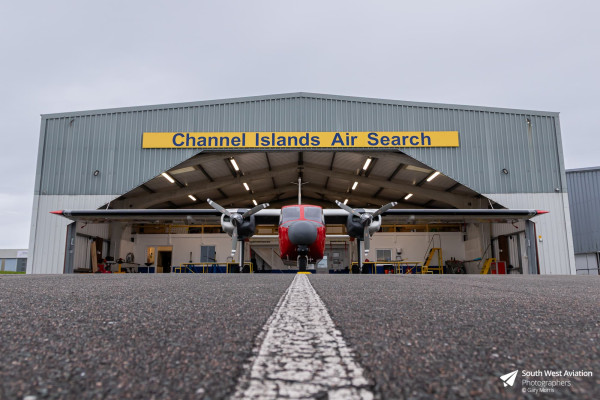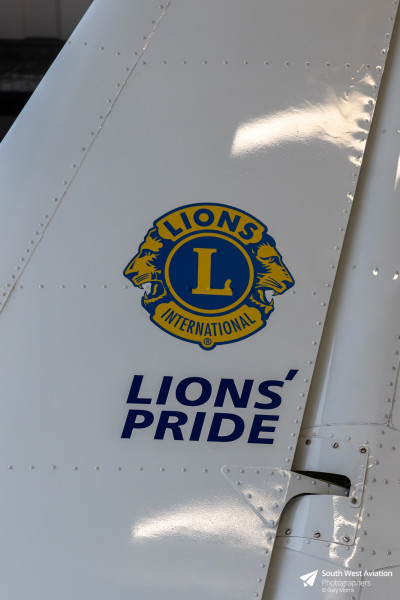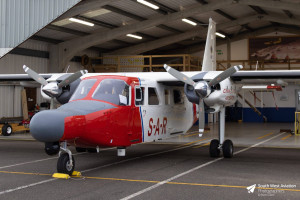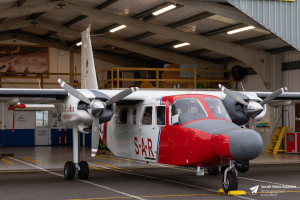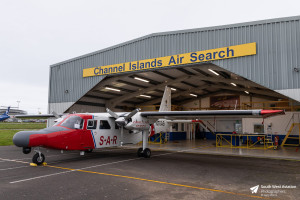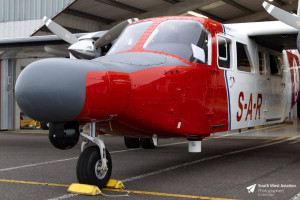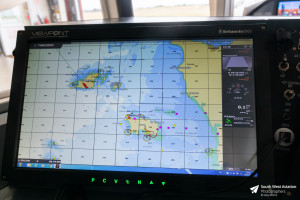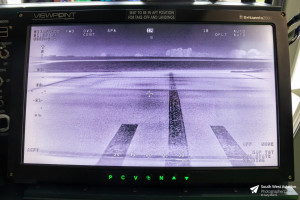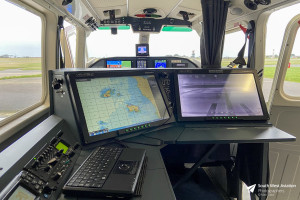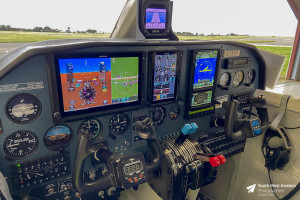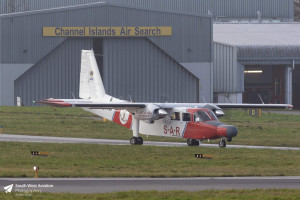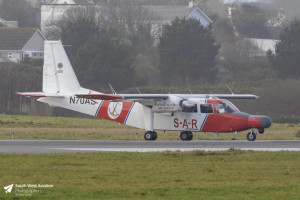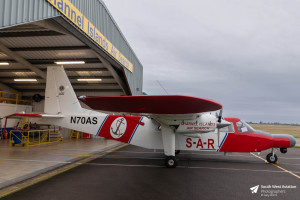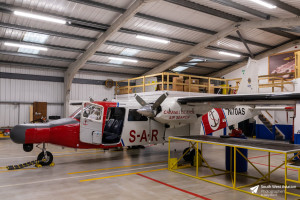When people think Search and Rescue in the Southwest of the British Isles they probably think of the bright yellow Westland Sea King HAR.3s of the Royal Air Force or their red and grey HU.5 counterparts from the Royal Navy. However, some 30 miles south of the English coast is a charity organization that has been providing a lifesaving service for over 45 years to the Channel Islands and surrounding areas. Channel Islands Air Search (CIAS) is a volunteer run, charity funded organization specializing in fixed wing search operations and providing support to the lifeboats of the Channel Islands.
CIAS was the brainchild of Captain Roger Dadd and three of his colleagues from Guernsey Airlines in 1980. The four were able to utilize one of the airline’s Piper PA-23-250 Aztec E aircraft along with their knowledge of the local area to provide an emergency search capability. At the time, and still to this day, the CIAS is the only airborne emergency search and rescue asset on the Channel Islands. Up until this point the islands relied upon mutual aid from either England or France, which caused delays to rescues due to the time it took these aircraft to arrive on scene.
As a charity CIAS must rely on donations, both in the form of individual donations from the island’s population of around 170,000 people, and corporate donations from the many local companies based on islands. A long-standing supporter of CIAS are the Lions Clubs of Guernsey and Jersey and from the early years they were raising funds to purchase their original Piper Aztec. More recently they have helped purchase the two Islander aircraft, additional search equipment such as the Forward Looking Infra-Red Camera and Personal Protective Equipment such as the dry suits. The bond between the clubs and CIAS is so strong that their current airframe is named Lion’s Pride and is adorned with the Lions International crest on its tail. CIAS is overseen by a board of trustees, supported by a fundraising team of six volunteers in Guernsey and six volunteers in Jersey.
Since 1993 the Britten-Norman BN-2 Islander has been COAS’s airframe of choice, initially purchasing a Britten-Norman BN-2B-21 Islander which had previously operated in Ecuador, this airframe, registration G-CIAS, served the charity well up until an incident in 2013 which saw the it being withdrawn from service. A Britten-Norman BN-2A-26 Islander was leased from Britten-Norman after the incident until the charity’s current airframe, Britten-Norman BN-2B-20 Islander registration N70AS (previously G-CKYC) was delivered after being purpose built for CIAS in 2018. Located in its CIAS’s own hangar at the centre of Guernsey Airport the aircraft is available 365 days a year, 24 hours a day and capable of flying both day and night in Instrument Meteorological Conditions. However, for search operations they require Visual Meteorological Conditions. CIAS will undertake searches for up to 2.5 hours in duration but anything longer than this will require the aircraft to land and the crew will refresh and swap out if needed, before continuing with the tasking.
Channel Islands Air Search have been in the fixed wing search and rescue game for a lot longer than 2excel and HM Coastguard have been operating their Beech 200 King Air, Diamond DA62 and Piper PA-31-310 Navajo, so it’s no surprise that these airframes are utilizing the same mission equipment as the CIAS Islander, that of a Wescam MX10 IR Turret, Koden Marine Radar, Rotheta Multi-Frequency Homer, TZ Professional Marine Navigation and AIMS-HD Mission Management Systems.
Guernsey Coastguard operate as launch authority for CIAS, coordinating the call out of the aircraft and crew outside of Guernsey Airport’s standard operating hours Air Traffic Control and the Airfield Rescue and Firefighting Service. The charity has 18 fully trained crew members and crew composition for a tasking comprises of five, made up of one Pilot, one Mission Director, and three search operatives. The majority of their tasking is carried out in and around the Channel Islands, but it is not unheard of for mutual aid to be provided to both the French and UK Coastguards with both coastlines being within an hours flight time away. An area that CIAS are keen to develop is their working relationship with HM Coastguard, with their Islander being closer and able to respond quicker to incidents in the westerly end of the English Channel than 2excel who are based at Humberside Airport it would make sense for HM Coastguard to utilize this asset more.
Channel Islands Air Search do not make a charge for performing searches or responding to calls for standby and is a wholly voluntary organization, with many of the aircrew being serving corporate or commercial pilots. They require £300,000 a year to continue their operations so if you would like to support the cause you can do so here.
| Registration | Aircraft Type | Construction Number | Operated From | Operated To |
|---|---|---|---|---|
| G-BBWM | Piper PA-23-250 Aztec E | 27-7405268 | 1980 | 1993 |
| G-CIAS | Britten-Norman BN-2B-21 Islander | 2162 | 1991 | 2014 |
| G-BEXH | Britten-Norman BN-2A-26 Islander | 2020 | 2014 | 2018 |
| N70AS | Britten-Norman BN-2B-20 Islander | 2314 | 2018 | Current |
South West Aviation Photographers would like to thank everyone at Channel Islands Air Search for making this article possible.
Article by Gary Morris & Matt Sudol
© South West Aviation Photographers 2025

